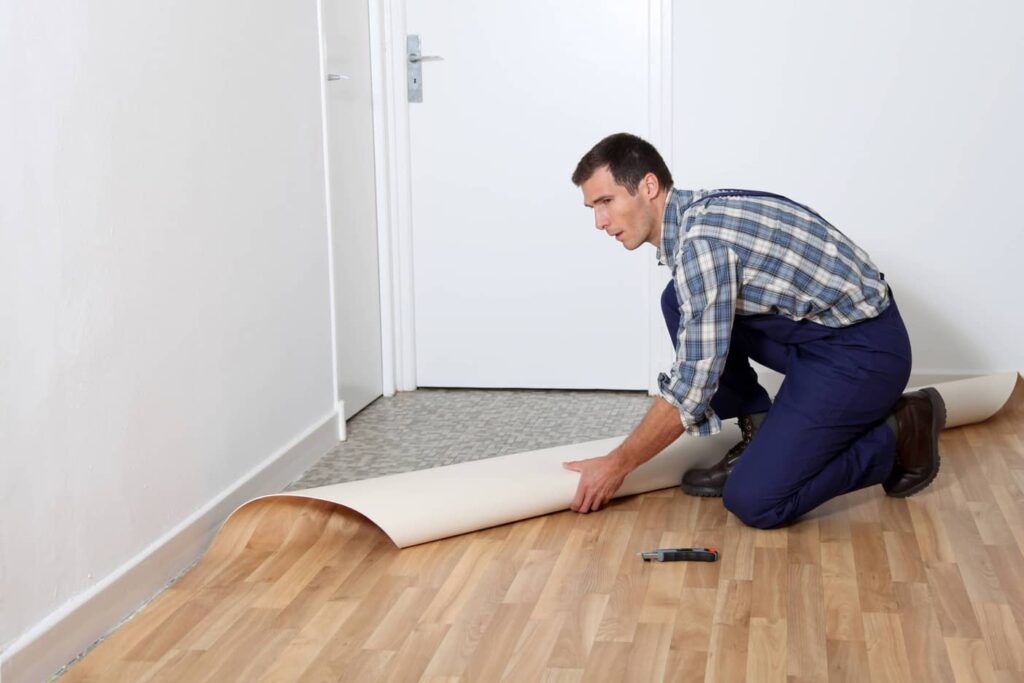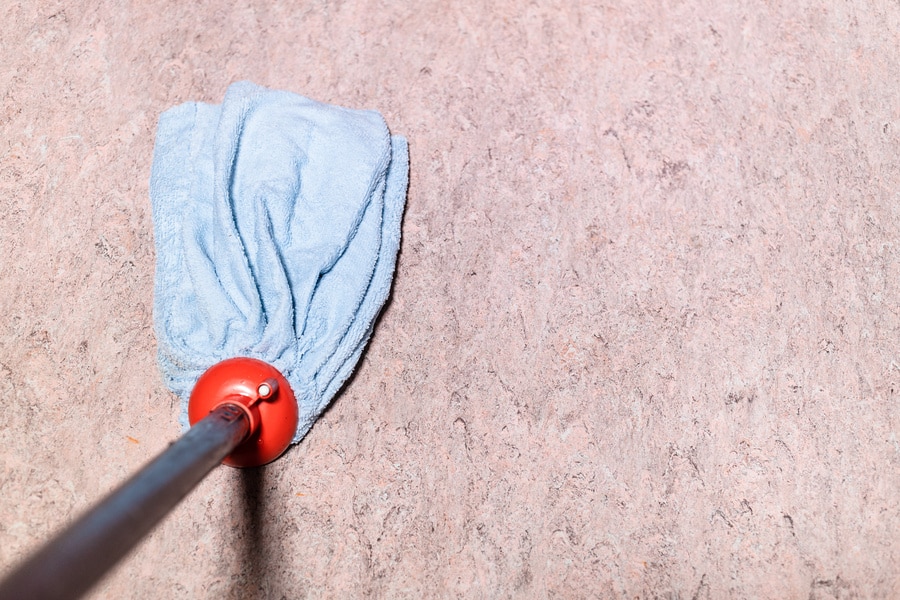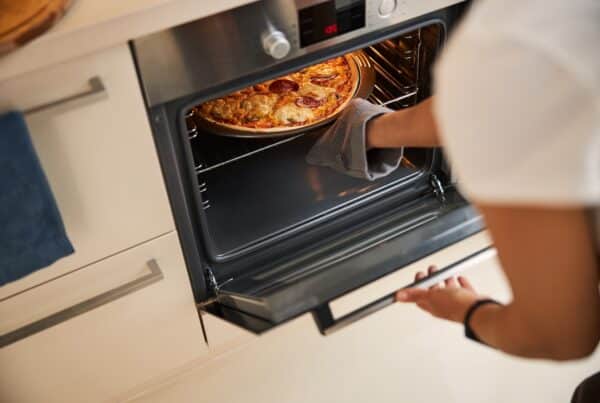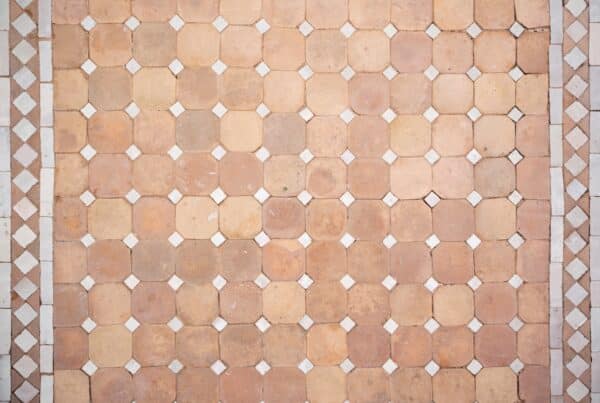
Linoleum is a popular and practical flooring choice for many homeowners. It’s durable, affordable, water-resistant, and available in a wide range of colors and patterns. However, like any flooring, linoleum requires regular cleaning and maintenance to keep it looking its best. In the sections below, we’ll teach you how to clean linoleum floors properly, what tools and supplies you’ll need, and provide tips for keeping your floors spotless.
Why Choose Linoleum Floors?
Linoleum flooring offers many attractive benefits that make it a popular choice for homeowners. To start, linoleum is highly durable and long-lasting, able to withstand decades of footsteps and high traffic without showing significant signs of wear and tear.
The water-resistant surface also makes linoleum an ideal flooring option for kitchens, bathrooms, laundry rooms, and other areas prone to moisture. Homeowners can choose from a wide array of linoleum colors, patterns, and finishes to complement any home’s style and decor. Compared to alternatives like vinyl or ceramic tile, linoleum is very cost-effective, providing an affordable flooring solution. Environmentally-conscious homeowners may also appreciate that linoleum is manufactured from natural and renewable materials such as linseed oil, cork dust, wood flour, and organic pigments. This gives it an eco-friendly appeal over synthetic flooring options.
Finally, linoleum is relatively easy to clean and care for compared to carpeting or hardwood floors. With some basic maintenance like regular sweeping, mopping, and prompt mess cleanup, linoleum floors can stay fresh and attractive for years before requiring deep cleaning or resealing. For all these reasons, linoleum remains a practical, versatile, and attractive flooring choice for many households.

How Often Should You Clean Linoleum?
To keep linoleum floors looking fresh and well-maintained, it’s recommended to clean them thoroughly at least once per week. For high-traffic areas of your home or in households with kids and pets, you may need to increase the frequency to 2-3 times per week to keep up with messes.
Daily maintenance is also advised. Quickly sweeping, vacuuming, or dust-mopping linoleum floors each day will remove surface dust, dirt, and debris before it can build up. This quick daily tidying helps extend the time between deep cleanings. It also prevents gritty dirt from scratching your floors or getting ground into the surface.
Attention high-traffic zones like entryways, the kitchen, and main walkways. These areas tend to get dirtier faster. You may need to spot-clean or deep-clean these spaces more often than low-traffic areas.
Supplies You’ll Need
Having the right cleaning supplies on hand will make the process of caring for your linoleum floors quick and easy. Before getting started, take inventory of your cleaning closet and gather the essentials.
The main piece of equipment you’ll need is a good mop. Opt for a microfiber mop head or sponge mop rather than a string mop. Microfiber attracts and lifts away dirt without leaving lint behind. And sponge mops are gentle on floors. Stay away from harsh scrub brushes or scouring pads that could scratch your linoleum.
Other handy supplies include:
- Broom or vacuum cleaner – Use the brush attachment to reach corners and baseboards. This removes surface-level dirt before mopping.
- Two buckets – Fill one with the cleaning solution and one with rinse water. The double bucket method helps get floors cleaner.
- pH-neutral cleaner or mild dish soap – Harsh chemicals can damage floors. Read labels and follow directions.
- Soft scrub brush – For tackling sticky spots or stains. Avoid excessive scrubbing.
- Clean rags, towels, or microfiber cloths – These dry floors after mopping without leaving lint.
Steps to Follow to Clean Linoleum Floors
Regular linoleum floor cleaning doesn’t have to be a chore. Just follow these simple step-by-step instructions to keep your floors looking their best:
1) Sweep or vacuum the floor thoroughly. Use the vacuum’s brush attachment to easily reach corners, baseboards, and hard-to-access areas. This removes any loose dirt or debris before mopping.
2) Fill one bucket with warm water and add a small amount of mild, pH-neutral floor cleaner or dish soap, following label directions. Too many suds can leave a sticky residue.
3) Dip your mop into the cleaning solution and firmly wring out excess water. Avoid over-saturating the floors. Gently mop in overlapping strokes across the floor’s surface, rinsing the mop often.
4) use a soft scrub brush and concentrated cleaner for sticky spots or set-in stains. Allow to soak for 5 minutes before gently scrubbing. Don’t over-scrub or you may damage the floor’s sealant.
5) When finished washing, fill a second bucket with cool, clean rinse water. Dip the mop, wring out thoroughly, and mop again to remove soapy residue.
6) Let the floor air dry completely or use clean, soft towels to dry the surface. Avoid walking on the floor until it’s 100% dry.

Other Recommended Maintenance
Regular mopping and cleaning are essential, but linoleum floors also benefit from some additional maintenance and care.
Sweeping, dust mopping, or vacuuming daily prevents gritty dirt buildup that can scratch floors over time. Pay extra attention to high-traffic areas and be sure to reach into corners and along baseboards where dust accumulates. Placing mats at entryways helps trap dirt, sand, and moisture from shoes before it’s tracked onto the floor. Also, promptly cleaning up any spills or messes prevents stains and damage.
Resealing floors annually or as needed protects the finish and prevents water damage in kitchens, bathrooms, etc. Avoid using wax, oil soap, or harsh chemicals not specially formulated for linoleum, as these can dull and damage the floor over time.
Finally, protect floors from furniture legs, rolling chairs, appliance feet, and pets’ claws using felt pads in high-contact areas. With some simple additional care, your floors will stay beautiful for years to come.
When to Call a Professional
While regular mopping and cleaning can keep linoleum floors looking their best, some situations call for professional help.
If you encounter deep stains, scratches, or other damage that require special treatment, it’s best to hire a qualified flooring contractor. Professionals have the expertise and tools to handle repairs and resolve issues beyond basic cleaning. Every few years, consider having the floors professionally deep-cleaned and resealed to revitalize the finish and ensure lasting protection.
Routine professional maintenance along with your regular care makes for long-lasting, great-looking linoleum floors. Reach out to a highly reviewed local flooring company to assess your options.
Conclusion
To recap, linoleum floors offer homeowners a practical, durable, and eco-friendly flooring option that can last for decades with proper care.
Keeping up with sweeping and mopping regularly, promptly cleaning up spills, and taking a few additional maintenance steps, you can keep your linoleum floors looking fresh and attractive year after year. For deep cleaning or repairs, rely on flooring professionals who have the expertise to keep your floors in tip-top shape. For an expert inspection of any area of your home in the Houston, TX area, contact the professionals at All Coast Home Inspections today!



